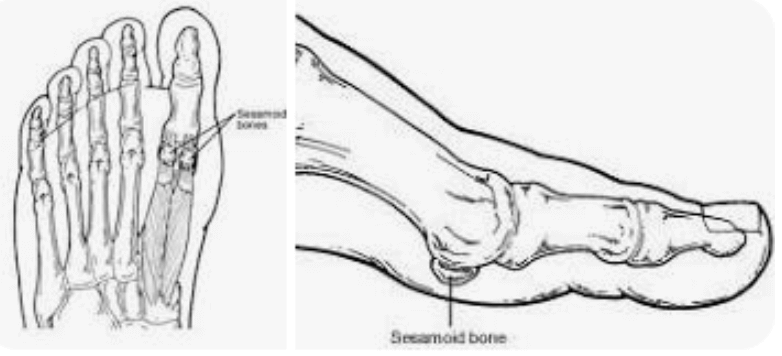
Dr. Timothy Young - a Board Certified Foot Surgeon Discusses Sesamoid Problems – Part 1
Sesamoid problems are fairly common in the feet. There are 2 sesamoid bones at the base of the great toe joint. These are small bones about the size of a pea. A larger sesamoid bone is the patellar kneecap. By definition, a sesamoid bone has a muscle and then the sesamoid bone which crosses the joint, and then there is a tendon from the sesamoid bone crossing over the joint to attach to the other side of the joint. In the knee, there is the quadricep muscle which attaches to the patella or kneecap, and then the knee Is attached to the tibia by the patellar tendon.
This muscle sesamoid bone and tendon complex crosses the joint and gives leverage and protection to the mechanical function of the joint. In the foot, the sesamoid bone can be very vulnerable. As soon as the heel comes up off the ground during gait and other full weightbearing activities, the load and weight is transferred to the forefoot and up to have to wait or more will be transmitted through the sesamoid bones into the head of the first metatarsal. Therefore, any running activity our other sports such as dance puts a heavy load on the sesamoid bones. These are common activities with the sesamoid bones can be injured or damaged.
If you are experiencing foot or ankle pain, give us a call today at 425-391-8666 or make an appointment online.



